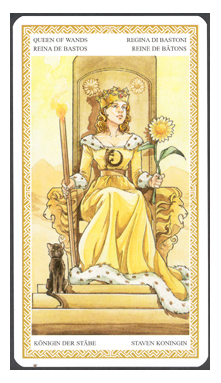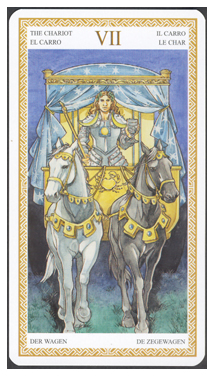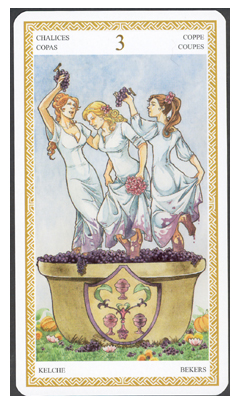|
 The "Lo Scarabeo Tarot" was created in continuation of the commemoration of the company's 20
year anniversary. The concept was to create a useable tarot deck, that united not only the
elements but also the conceptual ideas from three very different mastodont tarot decks: the Waite-
Smith, the Crowley-Thoth and the Marseilles Tarot. Each of these three decks constitute an
original tarot doctrine and all of them have survived ever since they were created, despite
the hundreds of other tarot packs that continuously reach the market, live for a short time and
then completely disappear again, if they in the meantime have not ended up in a collection. To
unite the conceptual contents of these three decks may appear an impossibility; the
different sequence of the majors alone might be a hurdle that could not be easy to overcome.
Lo Scarabeo tried the impossible anyway.
The "Lo Scarabeo Tarot" was created in continuation of the commemoration of the company's 20
year anniversary. The concept was to create a useable tarot deck, that united not only the
elements but also the conceptual ideas from three very different mastodont tarot decks: the Waite-
Smith, the Crowley-Thoth and the Marseilles Tarot. Each of these three decks constitute an
original tarot doctrine and all of them have survived ever since they were created, despite
the hundreds of other tarot packs that continuously reach the market, live for a short time and
then completely disappear again, if they in the meantime have not ended up in a collection. To
unite the conceptual contents of these three decks may appear an impossibility; the
different sequence of the majors alone might be a hurdle that could not be easy to overcome.
Lo Scarabeo tried the impossible anyway.
 In the enclosed "little white book" - for once a booklet with a contents relevant to the deck -
the US tarot writer Mark McElroy, who was assigned to do the scripts for "Lo Scarabeo Tarot",
describes the procedures, that led to the final deck. How each of the cards from the three decks
were compared with the others, searching out elements common to all three and elements common to
two of them and deciding what should be carried over to the new deck. Additionally small touches,
relevant to modern interpretations of each card, were added to the description. The problem with
the sequences was solved by the decision of using the major arcana sequence initiated by A.E.
Waite in the Waite-Smith Tarot, even though the two other decks used the early traditional
European sequence, used by esoterists like Eliphás Lévi and Oswald Wirth.
In the enclosed "little white book" - for once a booklet with a contents relevant to the deck -
the US tarot writer Mark McElroy, who was assigned to do the scripts for "Lo Scarabeo Tarot",
describes the procedures, that led to the final deck. How each of the cards from the three decks
were compared with the others, searching out elements common to all three and elements common to
two of them and deciding what should be carried over to the new deck. Additionally small touches,
relevant to modern interpretations of each card, were added to the description. The problem with
the sequences was solved by the decision of using the major arcana sequence initiated by A.E.
Waite in the Waite-Smith Tarot, even though the two other decks used the early traditional
European sequence, used by esoterists like Eliphás Lévi and Oswald Wirth.
Did Lo Scarabeo then succeed in creating this amalgamation of three traditional and famous decks?
Yes and no, more "no" than yes actually, I am afraid. As I see it, the script, the chosen
elements to be included in each card are relevant enough even though elements from the Waite-Smith
tarot get the better part of it and the Marseilles elements are hardly discernable. The elements
can, of course, be identified if you know the decks they come from; an interesting pastime in
itself but not the purpose. Lo Scarabeo's intention was to create a deck that connected to the
long tradition behind tarot, and which would appeal to everyone, experienced tarotists as well
as beginners. The major problem is, however, that the work of the illustrator, Anna Lazzarini,
doesn't work well. Even competent illustrators do not necessarily familiarize themselves with
their subject. It would take an artist with a feeling for the tarot tradition to
interpret, transmit and combine not only the elements but, in particular, the mood inherent in the three
original decks. Unfortunately.
|
